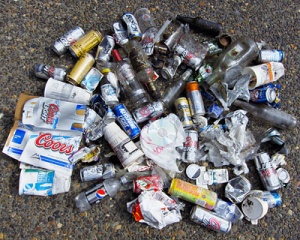Pop!
In the distance the muted sound of a single gun shot. I crouched low, waiting.
Pop!
Pop-pop!
Pop-pop-pop-pop!
In the dark corner of the alley way, I could not be sure of the direction of the gun fire. It was obvious the fight was escalating.
The sound echoed, it was difficult to tell how many gunmen were out there among the deserted buildings.
popopopopop-popopopopop
The rapid fire of an automatic weapon, followed by silence. One minute, two minutes, still I waited, barely wanting to breathe.
Nearby, I heard a hushed voice. “Indy? Indy?” A hand reached out and touched my shoulder. “Indy ? Indy? Indy…ff? Jeff? Jeff? are you awake?”
 I woke up…on my back deck…grinned sheepishly at my wife…and admitted I must have fallen asleep. “The Curse of the Black Walnut” was not the latest Indiana Jones adventure and no, I was not Harrison Ford. The pop-pop-popping was not the sound of gun fire. “The Curse of the Black Walnut” was the sound of dozens and dozens of walnuts falling from the trees and covering the ground; covering the ground where we had just spent the last four hours picking up walnuts.
I woke up…on my back deck…grinned sheepishly at my wife…and admitted I must have fallen asleep. “The Curse of the Black Walnut” was not the latest Indiana Jones adventure and no, I was not Harrison Ford. The pop-pop-popping was not the sound of gun fire. “The Curse of the Black Walnut” was the sound of dozens and dozens of walnuts falling from the trees and covering the ground; covering the ground where we had just spent the last four hours picking up walnuts.
A little over three years ago, we moved into our dream home. A nice home on about four acres, Mud Creek running through the backyard, a small white barn, a meadow, some woods and 28 Black Walnut trees in the back. The first fall we lived in the house, hundreds of walnuts fell to the ground. It was a pain, but honestly we didn’t think much about it. The former homeowner teased us a bit, but we shrugged it off.
The second year, Indiana had suffered a pretty severe drought. There were very few walnuts.
This year? This year was different. The walnuts began falling in mid-August. At first, it was easy to keep up with them. (Especially easy for me since Carmen did most of the “picking”). She would spend an hour or so a couple times a week walking the yard and picking up the nuts. She devised an ingenious method of using the old “pooper scooper” we had saved after our dogs had passed. She was able to pick up the nuts without the backbreaking job of bending over all the time. Even so, it was tough work.
As we got deeper into fall, more and more walnuts began to fall. It was now impossible to pick them all up in a single evening. In fact, it took three or four nights and by the time we got done, more had fallen. By this time, we had ordered another “pooper scooper” so we could both work.
The peak (we hope) was this past Saturday. We both worked for four hours to pick up all the walnuts. The yard was cleared. Carmen went inside and I sat down on the deck to rest and close my eyes a bit. About that time, the wind picked up. Pop. Pop. Pop-pop! Pop-pop-pop!
I can’t tell you how many walnuts we have picked up this season, exactly. What I can tell you is that a “pooper scooper”  holds about 30 walnuts. Dumping those scoops into a wheelbarrow, we count 20 – 30 scoops to a load. I have lost track of the number of wheelbarrow loads I have dumped, but I am guessing it is closing in on a hundred. Do the math, THAT my friends is a LOT of walnuts.
holds about 30 walnuts. Dumping those scoops into a wheelbarrow, we count 20 – 30 scoops to a load. I have lost track of the number of wheelbarrow loads I have dumped, but I am guessing it is closing in on a hundred. Do the math, THAT my friends is a LOT of walnuts.
So while the “The Curse of the Black Walnut” may not star Harrison Ford, I have PLENTY of cursing for those damn walnuts!
If anything you read here or in other posts strikes a chord, I would love to hear from you. Leave a comment, hit me up on Twitter (@jtongici), find me on LinkedIn, or Google +.





